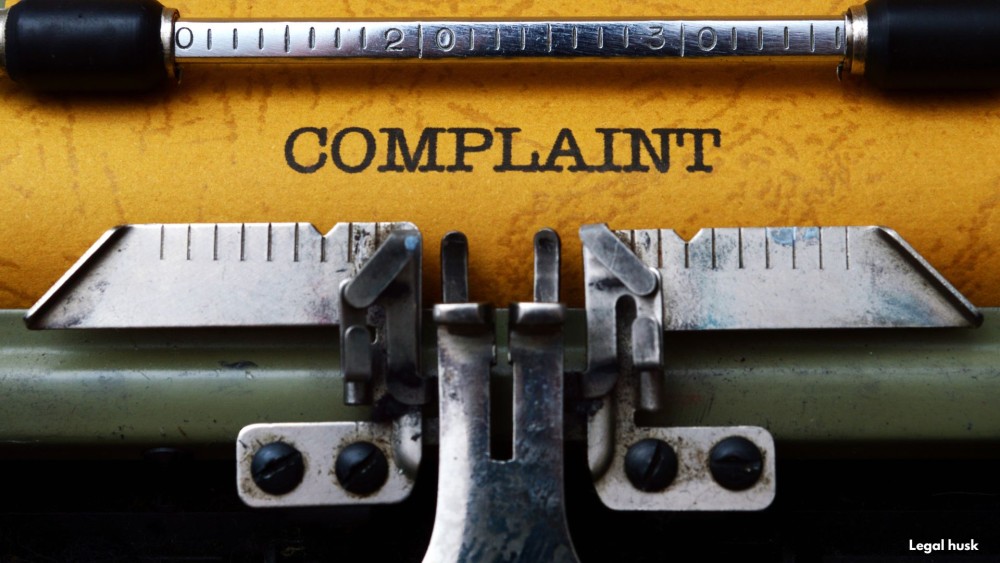Get Your Legal Documents Now!
Whether you are dealing with a complex family matter, facing criminal charges, or navigating the intricacies of business law, our mission is to provide you with comprehensive, compassionate, and expert legal guidance.

Learn the essential steps for filing a complaint in civil litigation. Understand legal requirements, procedural rules, common mistakes to avoid, and expert tips to strengthen your case.
Filing a complaint is the first and most critical step in initiating a civil lawsuit. A well-drafted complaint establishes the foundation for the case and ensures that legal procedures are followed correctly. This guide walks you through the essential aspects of filing a complaint, helping you navigate the process with confidence.
What is a Civil Complaint?
A civil complaint is a formal legal document filed by a plaintiff (the person or entity bringing the lawsuit) against a defendant (the person or entity being sued). It outlines the plaintiff’s allegations, the legal basis for the claim, and the relief being sought. The complaint serves as the official start of a lawsuit and must adhere to legal and procedural requirements to be considered valid.
Key Steps in Filing a Complaint
1. Determine the Right Jurisdiction
Before filing a complaint, you must establish the correct jurisdiction. This means selecting the appropriate court that has the authority to hear the case. Jurisdiction is determined by:
Filing in the wrong court can result in dismissal or transfer, delaying the case.
2. Draft the Complaint
A properly drafted complaint includes several essential elements:
Each section should be written clearly and concisely to present a strong legal argument.
3. Gather Supporting Evidence
Strong supporting evidence enhances the credibility of a complaint. Evidence may include:
Organizing and attaching relevant exhibits strengthens your case and improves its chances of success.
4. File the Complaint with the Court
After drafting the complaint, it must be filed with the appropriate court. This process involves:
Some courts allow electronic filing (e-filing), while others require in-person or mailed submissions.
5. Serve the Complaint on the Defendant
Once the complaint is filed, the defendant must be officially notified. This is done through service of process, which can be carried out in the following ways:
Proper service ensures the defendant has an opportunity to respond. Failure to serve correctly may result in case delays or dismissal.
6. Await the Defendant’s Response
The defendant typically has 20-30 days to respond to the complaint. Responses may include:
The response stage determines how the case proceeds—whether through settlement, motion hearings, or trial.
Common Mistakes to Avoid When Filing a Complaint
1. Filing in the Wrong Court
Jurisdiction and venue must be carefully determined before filing. A mistake in court selection can result in unnecessary delays and additional costs.
2. Failing to Include Essential Elements
Missing key components such as legal claims, factual statements, or the correct parties involved can weaken the complaint and lead to dismissal.
3. Overloading with Unnecessary Details
While facts are crucial, excessive detail can make the complaint harder to read and may weaken its impact. Stick to relevant, concise information.
4. Inadequate Service of Process
If the complaint is not properly served, the case cannot proceed. Plaintiffs must follow service rules strictly to ensure the defendant is legally notified.
5. Missing Filing Deadlines
Statutes of limitations determine how long a plaintiff has to file a complaint. Missing these deadlines can permanently bar the case from proceeding.
Tips for Strengthening Your Complaint
1. Seek Legal Advice
Consulting with an attorney can help ensure that the complaint is correctly structured, legally sound, and compliant with court rules.
2. Use Clear and Precise Language
The complaint should be direct, avoiding legal jargon where possible. Clarity enhances persuasiveness and helps the court understand the case.
3. Organize Supporting Documents
Properly labeled exhibits and well-organized evidence make the complaint more compelling and easier to navigate.
4. Review Before Filing
Errors in names, case numbers, or legal claims can harm the case. A thorough review before filing prevents unnecessary complications.
5. Consider Settlement Options
Many cases settle before reaching trial. Before filing, explore alternative dispute resolution methods, such as mediation or arbitration, which may save time and legal expenses.
How Legal Husk Can Help You Get Your Complaint Right from the Start
At Legal Husk, we know that a well-crafted complaint sets the tone for a successful litigation strategy. Whether you're an attorney or representing yourself (pro se), we help ensure your complaint is:
✅ Clear, concise, and aligned with legal standards
✅ Properly formatted and supported by necessary facts and exhibits
✅ Filed on time and in the correct court
✅ Structured to avoid early dismissals and procedural pitfalls
We also assist with:
📝 Amending complaints when needed
🧾 Responding to motions to dismiss
📅 Building a case timeline that keeps you on track through discovery and beyond
📌 Let’s build your case on a solid foundation.
Visit:
legalhusk.com
legalhusk.com/services
legalhusk.com/services/civil-litigation
legalhusk.com/about-us
We’re Here to Support You
Filing a complaint is a crucial legal step, and having the right guidance can make all the difference. Whether you need help drafting a complaint or navigating legal procedures, LegalHusk is here to assist you.
Whether you are dealing with a complex family matter, facing criminal charges, or navigating the intricacies of business law, our mission is to provide you with comprehensive, compassionate, and expert legal guidance.
Comments